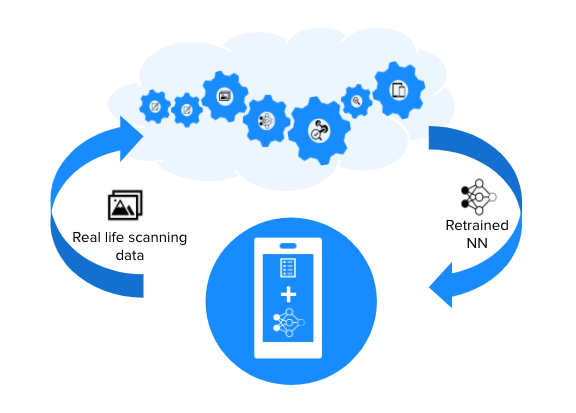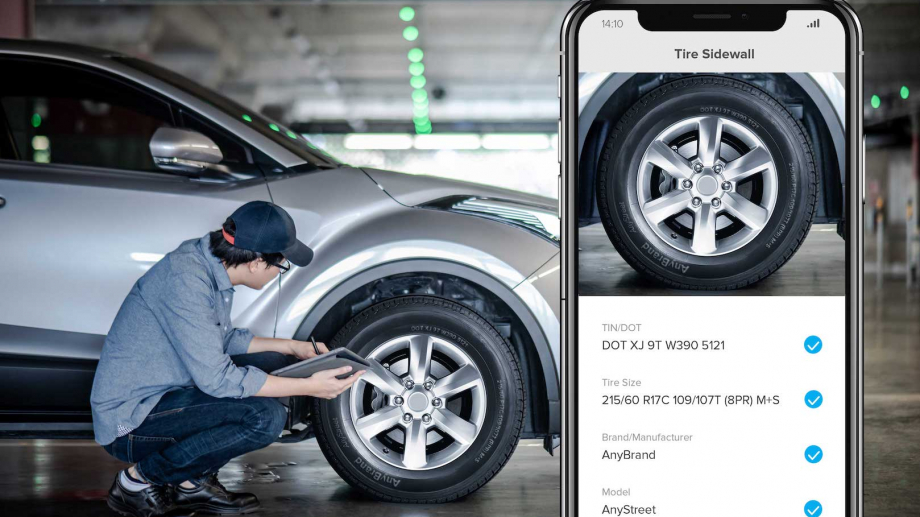
How to Train a Custom OCR Scanner in Hours
Many businesses can benefit from optical character recognition technology, but need a custom solution for their specific use. Creating an enterprise-quality OCR application is resource-intensive, and typically takes a team of machine learning experts months to develop and to deploy.
This is why we have developed the Anyline Trainer, a web-based, end-to-end computer vision and machine learning suite that can train a custom OCR scanner in hours. In this blog, we will explain how anyone can design, train and deploy a custom OCR software solution in real time and to any mobile device, all in 6 steps:
- Data Collection
- Annotation
- Augmentation
- Training
- Validation
- Deployment
2. Annotating Your Training Data
Annotation is the process of defining the individual characters on sample data to train the machine learning models. For example, if you want to create an OCR scanner to read a vehicle license plate with your mobile app, the annotation process would take the image of the plate, and identify each letter separately.
This is normally very time consuming, but the Anyline Trainer uses an automated funnel process to transform raw images into high quality annotated data in a fraction of the time that you would have to spend in a regular annotation process. However, if you still prefer to self-annotate this is also possible!
3. Augmenting Your Data For More Accurate OCR Software
With the annotated training data, the Anyline Trainer creates thousands of additional variations of the images provided. By augmenting the number of images, the Trainer improves the accuracy of the OCR software, as the machine learning model has more examples to work and train with.
Using our license plate example, the Trainer would create additional images with the letters in different orders, so that your OCR software solution is more robust and able to read a variety of different plates in real-life.
4. Training Your New OCR Scanner
With a large collection of annotated training images, the training of the machine learning models can begin. Creating the neural networks is normally the most complex part of creating an OCR scanner. However, with the Anyline Trainer, all you have to do is hit the start button and sit back! Your first version can then be trained automatically in a matter of hours.
To use the Trainer, you can choose to host it on your own data center, or if you prefer to have an external solution, you can also use Anyline’s cloud solution. Anyline specializes in running AI algorithms on mobile devices, which means that your new OCR solutions are trained to integrate with mobile architecture in mind.
6. Deployment of Your OCR Solution
Once your OCR solution is trained, it can be deployed to mobile devices. This is achieved with our patented ‘over the air’ technology, which makes it possible to download your new OCR scanning solution without any need for updating your main app.
Once deployed, you can take advantage of Anyline’s ‘dynamic machine learning’ function. Dynamic ML works like this: once you deploy your OCR solution onto your device, you can test it out by scanning the data you want, then reupload these test images to the Trainer to improve the accuracy even more.
In short, when you create an OCR solution with the Anyline Trainer, your AI model will get better with every scan, in a cycle of continuous self-improvement!

Delivering High Performance for Challenging OCR Use Cases
Many open source OCR tools are simplistic and cannot handle difficult use cases – such as reading characters on different material, recognising dirty or damaged texts, and functioning in adverse weather conditions or poor lighting.
The steps taken by Anyline Trainer, including augmentation and dynamic machine learning, make it possible to design highly custom-tailored scanners for any situation.
To give an idea of what is possible, here are only a few examples of custom OCR scanners we have built using the Trainer:
- Detecting serial numbers on metal, wood and chipboard
- Scanning Tire DOT numbers (the identification numbers on tires)
- Reading characters on pressure vessels
It is also possible to make further modifications to your specific OCR scanning solution, for example, to read multi-line texts, different data formats, and even scan multiple elements at the same time.
Combining the latest innovations in computer vision and machine learning on a single platform, the possibilities are endless with the Anyline Trainer.
What about Data Protection and Security?
As Anyline has received ISO/IEC 27.001:2013 certification, you can rest assured that your data is secure. With procedures in place to protect sensitive information, on-going risk-management and thorough security checks, Anyline provides you with the data security you need.
How can I get started?
If you want to start building the best OCR software within hours on the Anyline Trainer, get in touch and we can set up a trial as soon as possible!



